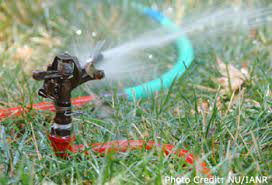Water the lawn or let it go dormant? Turfgrass expert offers drought advice
June 16th, 2021 by Ric Hanson
(Radio Iowa) – A lush, green lawn is a source of pride for many Iowans and this prolonged drought is forcing many of us to quit worrying about having the best lawn on the block — and let the grass go dormant. Adam Thoms, a horticulture professor at Iowa State University and a turfgrass extension specialist, says it’s stressful for grass to shake up the watering schedule, so he’s telling Iowans if their lawns are already turning brown, just let them go. “Putting them in and out of dormancy by watering and stopping and then restarting is really hard on the turf,” Toams says. “It’s okay to go into dormancy. The grass can last for 30 to 60 days with that straw brown color and it won’t hurt it at all. It’ll come back out in the fall.”
Des Moines Water Works, which serves more than 500-thousand customers in 18 central Iowa communities, is asking residents to voluntarily conserve and cut back on watering by 25-percent. Last Friday, demand for the utility hit 90-percent of production capacity. Toams predicts many folks in the Des Moines metro -will- cut back, as requested. “There’s some research out there that shows when they ask for those voluntary commitments that people do step up and follow those,” Toams says. “We always suggest that you don’t water every day anyway. It’s better to do a deep and infrequent watering. That forces the turf roots to go deeper to chase that water deep in the soil, so, that’s an okay thing.” 
Some people turn on the sprinklers for hours at a time and let them saturate the grass, but Toams says most lawns don’t need more than an inch of water in a week’s time. “If you can break that down over two or three times a week — that one inch — that’s fine,” Toams says. “If we get a week like next week’s coming up that they’re saying it’s going to be a little cooler, you can dial that back to eight-tenths of an inch or something like that. And of course, if we get any kind of rain, count that against your inch.” If you’ve laid sod within the past year or are trying to grow new grass from seeds, you’re in for what could be an expensive, frustrating challenge.
“Those are the ones that are going to get hurt by this drought. They’re the ones that need regular watering just because they don’t have a deep root system,” Toams says. “We do need to make sure that those get regular waterings. If you’re thinking about overseeding or adding seed to your yard, just wait. Right now is not the time. It’s too hot and it’s obviously too dry.”
Plus, given the weather patterns, he says more water restrictions are likely looming. If the dry weather lasts through summer and grass has been dormant up to six weeks, apply an inch or so of water in a single application. The grass won’t green up, but it’ll keep the roots alive. If the drought continues, water in that fashion every two weeks, but not enough to bring it out of dormancy. Toams suggests Iowans give their lawns a good dose of fertilizer this fall to help them recharge and ideally, come back strong next spring.





